Jameh Mosque of Natanz: Map, Photos, Ticket Price
The Jameh Mosque of Natanz stands as a testament to Iran’s rich architectural and cultural heritage. Nestled in the heart of the historic city of Natanz, this magnificent structure embodies the profound significance of Islamic architecture in the region. With its intricate design, historical importance, and religious significance, the Jameh Mosque is a captivating destination that attracts both tourists and devotees from around the world.
Jameh Mosque of Natanz History
The mosque’s origins date back to the 8th century during the Abbasid Caliphate. However, it underwent significant renovations and expansions during subsequent dynasties, including the Seljuks and Safavids, which have contributed to its current appearance and prominence.
In the southern part of the mosque, there is an inscription that gives a brief description of the building to visitors. According to this inscription, the Ilkhani section of the mosque was constructed under the orders of Caliph Hossein bin Mastri in 704 AH (1304 AD), and its master was Shamsuddin Mohammad Natanzi.
Stunning carvings can be seen on the wooden and double-hung doors of the mosque. The construction date can be seen in the lower part of the left lintel of the door in the form of an inlay with the date of 825 AH (1422 AD), which shows that it is more than 600 years old.
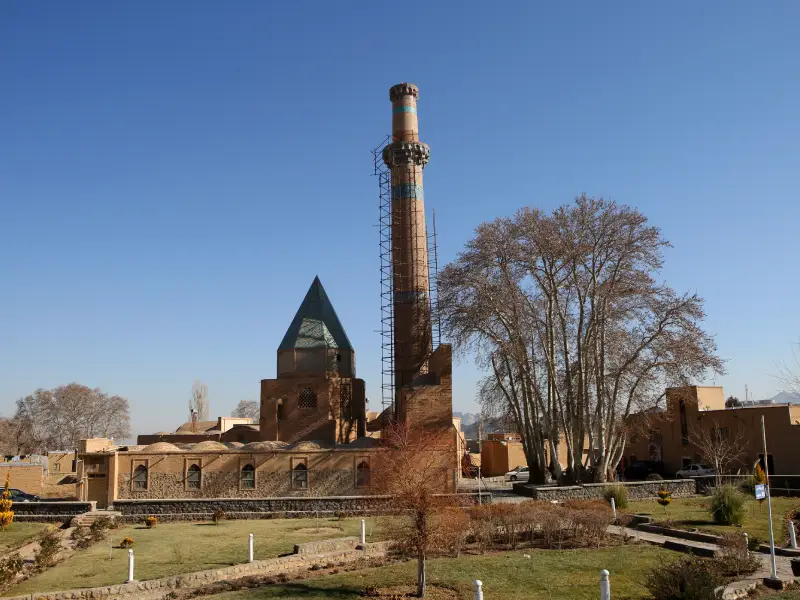
During the Seljuk period, the mosque was reconstructed and enlarged. The Seljuks were known for their love of art and architecture, and their influence is evident in the intricate geometric and floral designs found throughout the mosque.
Under the Safavid dynasty, the Jameh Mosque of Natanz underwent further renovations and additions.
The Safavids were great patrons of art and architecture and played a significant role in the expansion and embellishment of many historical buildings in Iran. They contributed to the mosque’s striking dome, vibrant tilework, and overall grandeur.
Jameh Mosque of Natanz Architecture
The Jameh Mosque of Natanz is a magnificent example of Islamic architecture, boasting a rich blend of architectural styles that have evolved over centuries.
The mosque’s design reflects influences from various historical periods, including the Abbasid, Seljuk, and Safavid
dynasties. Its most prominent feature is the elegant dome, meticulously crafted to achieve visual harmony and balance. The dome’s intricate tilework, adorned with geometric patterns and calligraphy, exemplifies the mastery of Persian tile artists and adds to the mosque’s striking beauty.
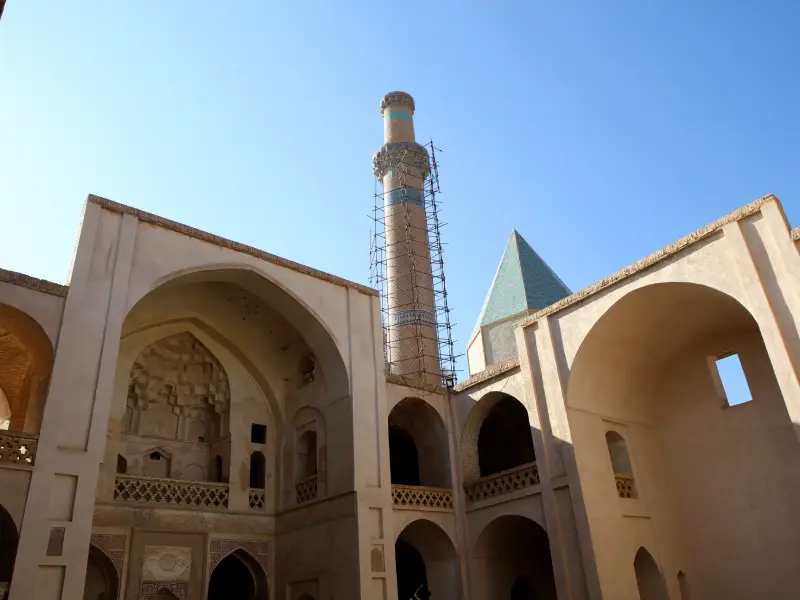
The mosque’s layout follows a traditional Islamic architectural plan, with a rectangular courtyard surrounded by arcades.
The courtyard provides a tranquil space for congregational gatherings and rituals, while the arcades, supported by beautifully decorated columns, enhance the overall aesthetics of the mosque.
The mihrab, a decorative prayer niche, and the minbar, a raised pulpit, showcase exquisite woodcarving and intricate designs.
The mosque’s entrance is marked by an iwan, a vaulted rectangular space with one end open, leading to the courtyard.
Together, the Jameh Mosque of Natanz’s architectural features creates a captivating blend of artistic prowess and spiritual significance, making it a cultural treasure and a cherished landmark in Iran’s architectural heritage.
Special Features of Jameh Mosque of Natanz
Intricate Tilework and Decoration: The mosque is renowned for its exquisite tilework and decorative elements. Elaborate patterns, vibrant colors, and calligraphy adorn the dome, walls, mihrab (prayer niche), and minarets, showcasing the mastery of Persian tile artists.
Historical Significance: The Jameh Mosque of Natanz has a long and illustrious history dating back to the 8th century. It has undergone significant renovations and expansions under various dynasties, including the Seljuks and Safavids.

Architectural Diversity: The mosque’s architecture reflects a fusion of various Islamic architectural styles due to numerous renovations over the centuries.
Elements from the Abbasid, Seljuk, and Safavid periods, among others, are visible in their design, making them an architectural treasure that showcases the evolving tastes and preferences of different dynasties.
Courtyard and Arcades: The mosque’s rectangular courtyard and surrounding arcades provide a serene and contemplative space for congregational gatherings and rituals.
The arcades are supported by beautifully decorated columns, adding to the overall aesthetics of the mosque.
What Makes Natanz Jameh Mosque Dome Special?
The dome of the Jameh Mosque of Natanz is unique due to its exceptional elegance and architectural mastery. Its proportions are carefully balanced, creating a visually captivating and harmonious structure that demonstrates the advanced skills of craftsmen during its construction.
The dome is decorated with intricate tilework and calligraphy and symbolizes Iran’s rich artistic heritage and cultural identity.
Its historical significance lies in its association with different dynastic periods, reflecting the evolving architectural styles over the centuries.
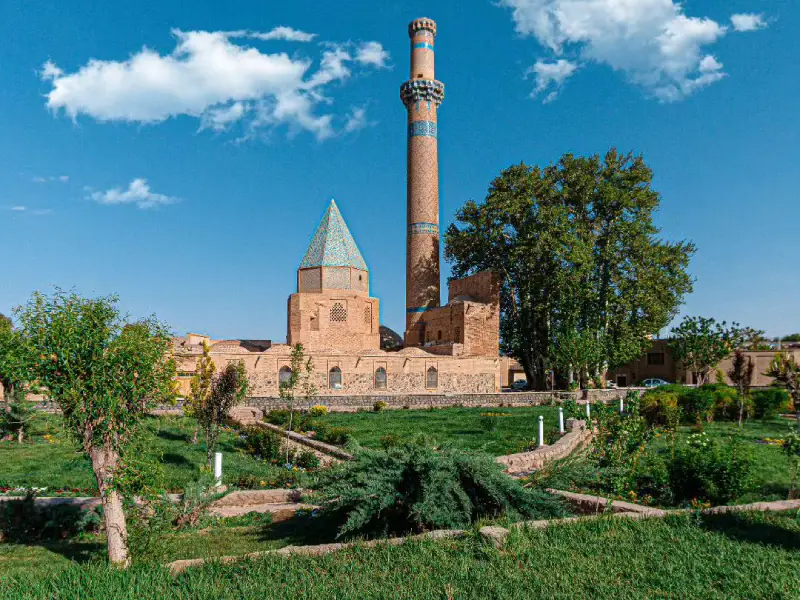
Moreover, as a prominent feature of Islamic architecture, the dome holds spiritual symbolism, representing the connection between Earth and the divine and creating an ambiance of tranquility and contemplation within the mosque’s interior.
The dome of the Jameh Mosque of Natanz stands as a remarkable and cherished architectural gem that represents Iran’s enduring legacy of artistry and cultural heritage.
Materials Used in the Construction of the Jameh Mosque of Natanz
The construction of the Jameh Mosque of Natanz involved the use of bricks for the walls and domes, intricate tilework with vibrant colors and calligraphy, stone for decorative elements and support, wood for doors and carvings, stucco for interior decoration, and mortar and lime as binding materials.
The combination of these materials and skilled craftsmanship resulted in the mosque’s captivating architecture, showcasing a blend of different historical periods and Islamic architectural styles.
Religious Significance
As one of the oldest and most significant religious sites, the Jameh Mosque of Natanz holds immense importance for both local residents and pilgrims alike in Iran.
The mosque serves as a place of worship and spiritual reflection for Muslims, drawing in countless devotees throughout the year. The serene ambiance and historical legacy contribute to an atmosphere of profound reverence and spirituality, making it an ideal destination for prayer and meditation.
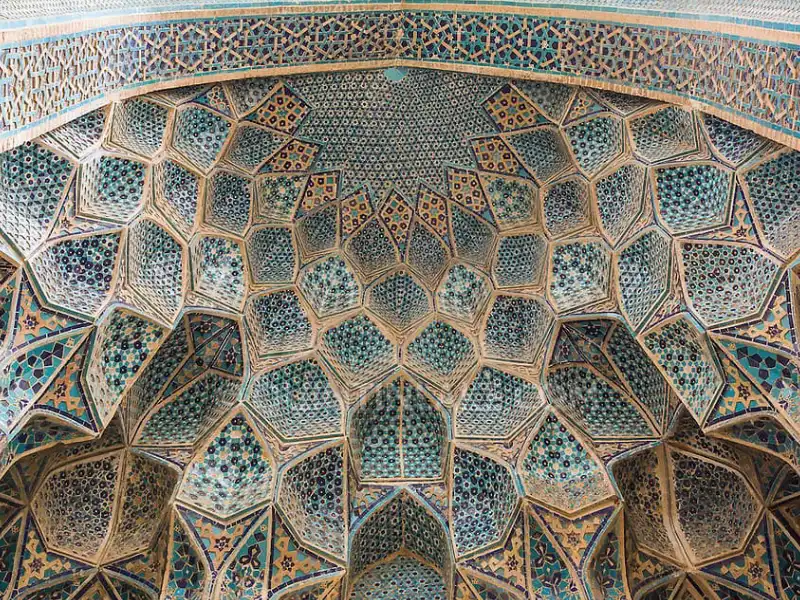
Cultural Heritage
The Jameh Mosque of Natanz is not merely a religious site but also a living testament to Iran’s rich cultural heritage. Its architecture, decorative elements, and historical significance offer invaluable insights into the artistic prowess and intellectual achievements of the past.
The meticulous craftsmanship displayed in every nook and corner of the mosque exemplifies the skill and dedication of the artisans who created this masterpiece.
Tourism and Visitor Experience
There is no better place in the world to visit than the Jameh Mosque in Natanz for travelers and history buffs. The ancient city of Natanz, with its narrow alleys and traditional bazaars, provides a charming backdrop for exploring the mosque and its surroundings.
Tourists can marvel at the intricate details, appreciate the tranquil atmosphere, and immerse themselves in the rich history of the region.
Where is Natanz Jameh Mosque?
The Jameh Mosque of Natanz is located in the city of Natanz, which is situated in the Isfahan province of Iran. Natanz is a historic city with deep cultural roots and is known for its architectural treasures, including the Jameh Mosque.
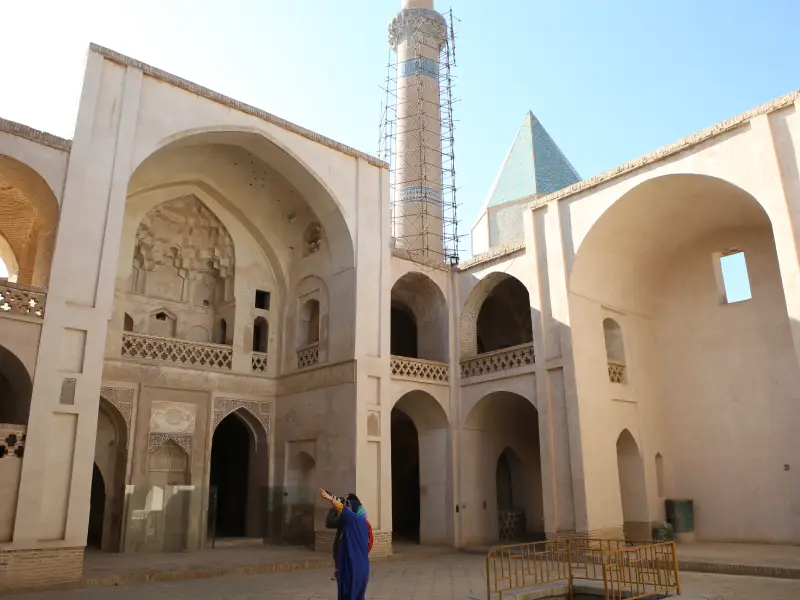
When exploring Natanz and its surroundings, visitors can discover a treasure trove of attractions that enrich their cultural experience.
The ancient village of Abyaneh, with its red mud-brick houses and traditional architecture, offers a charming journey back in time. Nearby, the historic fortress of Narin Castle provides captivating insights into Iran’s storied past.
The Best Time to Visit Jameh Mosque of Natanz
Spring (March to May): Spring in Natanz brings mild temperatures and blossoming landscapes. The weather is usually pleasant, with moderate temperatures during the day and cooler nights.
The surrounding gardens and countryside come alive with vibrant colors, providing a picturesque backdrop for your visit to the mosque.
Autumn (September to November): Autumn is another excellent time to visit the Jameh Mosque of Natanz. The weather is mild and enjoyable, making it ideal for outdoor exploration.
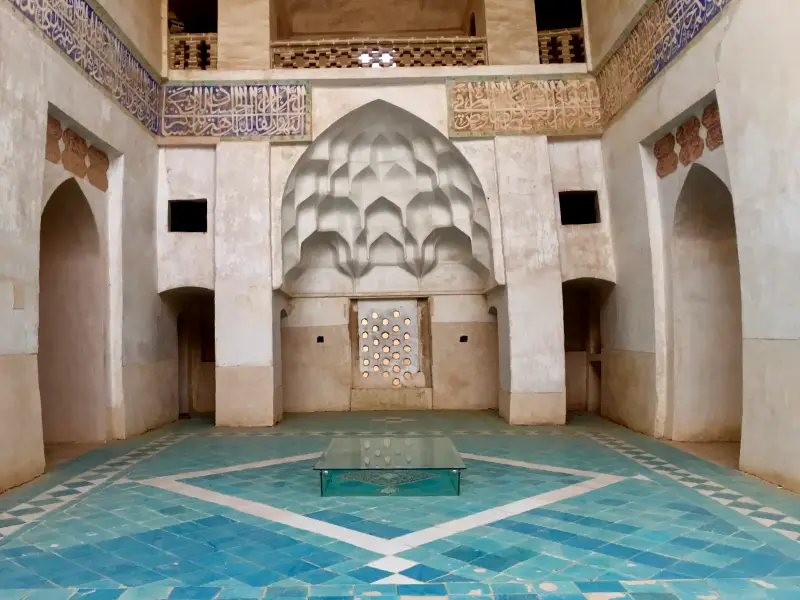
The autumn foliage in the region creates a stunning display of red, yellow, and orange hues, adding to the mosque’s charm.
During these seasons, you can comfortably explore the mosque and its surroundings without worrying about extreme heat or cold temperatures.
Additionally, the moderate weather allows for a more enjoyable experience as you stroll through the courtyard, admire the intricate tilework, and take in the historical ambiance of the mosque.
More Information to Visit the Jameh Mosque of Natanz
- Visiting days: Every day of the week except Mondays, from 9 am to 7 pm.
- Recommended duration of visit: 1 to 2 hours.
- Entrance fee: 500,000 Iranian Rials (approximately $1).
- Jameh Mosque of Natanz Contact Number: +98314243186.
Tip for visitors: Remember to dress modestly and respectfully as a sign of cultural sensitivity when entering the mosque.
Final Word
The Jameh Mosque of Natanz in Iran stands tall as a symbol of the country’s architectural brilliance and cultural heritage. With its rich history, stunning design, and spiritual significance, this ancient mosque offers a captivating experience for devotees and travelers. As one of Iran’s most treasured cultural gems, the Jameh Mosque of Natanz continues to inspire wonder and awe in the hearts of those who have the privilege of experiencing this extraordinary site.
Are you planning to travel to Iran and looking for an Iran resort? Consider Matin abad eco resort. Maybe you will find interesting things to do in Natanz.

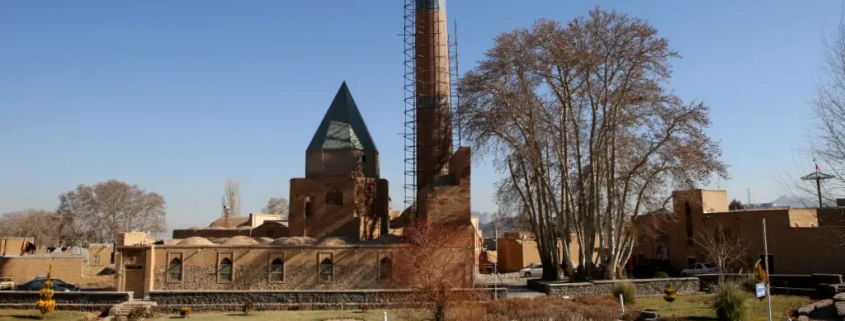



Leave a Reply
Want to join the discussion?Feel free to contribute!